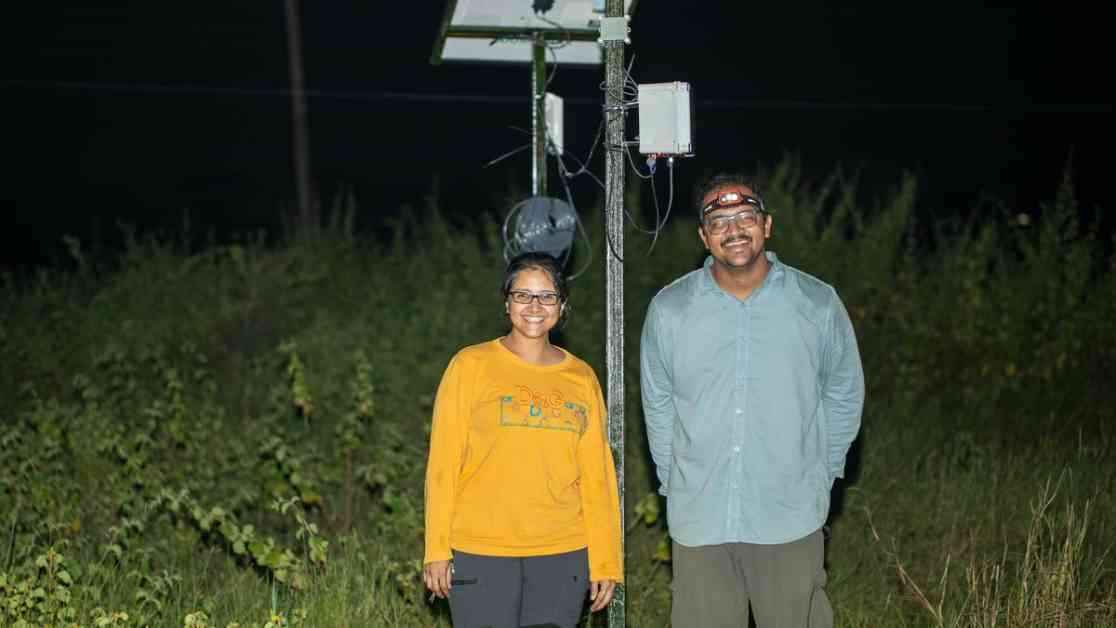In the heart of the Western Ghats, bat biologist Kadambari Deshpande embarked on a nocturnal odyssey like no other. Armed with a bat detector, she spent countless nights capturing the elusive echolocation calls of these winged creatures, amassing a staggering 30 GB of data from each 11-hour recording session. The sheer volume of data was overwhelming, requiring Deshpande to meticulously sift through one-minute recordings, deciphering the nuanced details of each bat call by hand. For nearly a year, she toiled tirelessly, painstakingly piecing together the intricate puzzle of bat behavior and ecology.
As she reflects on those long nights spent hunched over her recordings, Deshpande’s eyes light up with a newfound sense of excitement and possibility. The reason for her renewed optimism? BatEchoMon, a groundbreaking automated bat monitoring system that promises to revolutionize bat research in India. Developed by Deshpande and Vedant Barje under the expert guidance of Jagdish Krishnaswamy at the Indian Institute for Human Settlements (IIHS) in Bengaluru, BatEchoMon represents a significant leap forward in the field of chiropterology.
A Game-Changer for Bat Research
BatEchoMon is not your ordinary bat detector—it is a cutting-edge system equipped with state-of-the-art technology that can detect and analyze bat calls in real-time. Unlike traditional methods that rely on manual processing and interpretation of data, BatEchoMon streamlines the entire process, allowing researchers to delve deeper into the intricate world of bat ecology. With its ability to identify different bat species and track their activity patterns, BatEchoMon opens up a realm of possibilities for scientists seeking to unravel the mysteries of these nocturnal creatures.
According to Rohit Chakravarty, a bat researcher and conservationist at the Nature Conservation Foundation, BatEchoMon is a game-changer for bat research not just in India, but globally. Its advanced capabilities, including real-time data analysis and species identification, set it apart from other monitoring systems on the market. By automating the data processing and analysis, BatEchoMon frees up researchers to focus on asking more nuanced questions about bat ecology, paving the way for new discoveries and insights.
The Inner Workings of BatEchoMon
At the heart of BatEchoMon lies a sophisticated network of components that work seamlessly together to capture, process, and analyze bat calls. The system is equipped with Audiomoth, a low-cost ultrasonic detector that has been configured to function as an ultrasonic microphone, capturing the intricate echolocation calls of bats. Powered by a Raspberry Pi microprocessor, BatEchoMon is programmed to activate at sunset, the prime time for bat activity, and continuously monitor and analyze audio data throughout the night.
Using a convolutional neural network-based algorithm, BatEchoMon can isolate bat calls from background noise, analyze the frequency and structure of each call, and identify the corresponding bat species. The system generates spectrograms and audio recordings of detected bat calls, providing researchers with valuable insights into species diversity and activity patterns. With its modular design and customizable features, BatEchoMon can be tailored to suit different research environments, making it a versatile tool for bat researchers across the country.
As Deshpande and Barje prepare to expand their pilot tests and collaborate with fellow researchers, the future of bat research in India looks brighter than ever. With BatEchoMon leading the way, researchers are poised to unlock new discoveries and shed light on the hidden world of bats that call the Indian subcontinent home.
Nikhil Sreekandan is an independent journalist. Published – April 14, 2025 05:30 am IST.














